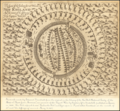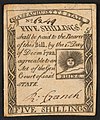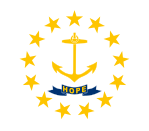Portal:New England
The New England Portal New England is a region comprising six states in the Northeastern United States: Connecticut, Maine, Massachusetts, New Hampshire, Rhode Island, and Vermont. It is bordered by the state of New York to the west and by the Canadian provinces of New Brunswick to the northeast and Quebec to the north. The Gulf of Maine and Atlantic Ocean are to the east and southeast, and Long Island Sound is to the southwest. Boston is New England's largest city and the capital of Massachusetts. Greater Boston is the largest metropolitan area, with nearly a third of New England's population; this area includes Worcester, Massachusetts, the second-largest city in New England; Manchester, New Hampshire, the largest city in New Hampshire; and Providence, Rhode Island, the capital of and largest city in Rhode Island. In 1620, the Pilgrims established Plymouth Colony, the second successful settlement in British America after the Jamestown Settlement in Virginia, founded in 1607. Ten years later, Puritans established Massachusetts Bay Colony north of Plymouth Colony. Over the next 126 years, people in the region fought in four French and Indian Wars until the English colonists and their Iroquois allies defeated the French and their Algonquian allies. (Full article...) Selected article
USS Connecticut was the lead ship of the six Connecticut-class battleships. Due to the Royal Navy's commissioning of HMS Dreadnought seven months earlier, Connecticut was obsolete before she was commissioned; thus, she was the last lead ship of any class of pre-dreadnought battleship commissioned by the United States Navy. Connecticut served as a flagship for the Jamestown Exposition, which commemorated the 300th anniversary of the founding of the Jamestown colony. She later sailed with the Great White Fleet on a circumnavigation of the Earth to showcase the United States Navy's growing fleet of blue-water-capable ships. After the Great White Fleet returned to the U.S. on 22 February 1909, Connecticut participated in several flag-waving exercises intended to protect American citizens abroad until she was pressed into service as a troop transport at the end of World War I to expedite the return of American Expeditionary Forces from France. For the remainder of her career, Connecticut sailed to various places in both the Atlantic and Pacific while training newer recruits to the Navy. However, the provisions of the 1922 Washington Naval Treaty stipulated that many of the older battleships, Connecticut among them, would have to be disposed of, so she was decommissioned on 1 March 1922 and sold for scrap on 1 November 1923. (Full article...)
Selected biography
Edgar Allan Poe was an American author, poet, editor and literary critic, considered part of the American Romantic Movement. Best known for his tales of mystery and the macabre, Edgar Allan Poe was also one of the earliest American practitioners of the short story and is considered the inventor of the detective fiction genre. He is further credited with contributing to the emerging genre of science fiction. Poe was the first well-known American writer to try to earn a living through writing alone, resulting in a financially difficult life and career.
He was born as Edgar Poe in Boston, Massachusetts; although he was orphaned at a very young age when his mother died shortly after his father abandoned the family. Poe was taken in by John and Frances Allan, of Richmond, Virginia, but they never formally adopted him. He attended the University of Virginia for one semester but left due to lack of money. After enlisting in the Army and later failing as an officer's cadet at West Point, Poe parted ways with the Allan's. His publishing career began humbly, with an anonymous collection of poems, Tamerlane and Other Poems (1827), credited only to "a Bostonian". (Full article...) Selected pictureKing Kelly's 1888 tobacco card; featured in the Benjamin K. Edwards Collection at the Library of Congress
General images -The following are images from various New England-related articles on Wikipedia.
Did you know (auto-generated)
Related portalsMore did you know...
Selected State
Rhode Island
Incorporated 1776 Co-ordinates 41.7°N 71.5°W Rhode Island, officially the State of Rhode Island and Providence Plantations, is the smallest in area, the 8th least populous, but the 2nd most densely populated of the 50 U.S. states. Rhode Island was the first of the original Thirteen Colonies to declare independence from British rule, declaring itself independent on May 4, 1776, two months before any other colony. The State was also the last of the thirteen original colonies to ratify the United States Constitution. Rhode Island's official nickname is "The Ocean State," a reference to the State's geography, since Rhode Island has several large bays and inlets that amount to about fourteen (14) percent of its total area. Its land area is 1,045 square miles (2706 km2), but its total area is significantly larger. (Full article...) WikiProjectsAssociated WikimediaThe following Wikimedia Foundation sister projects provide more on this subject:
Discover Wikipedia using portals |

















































































